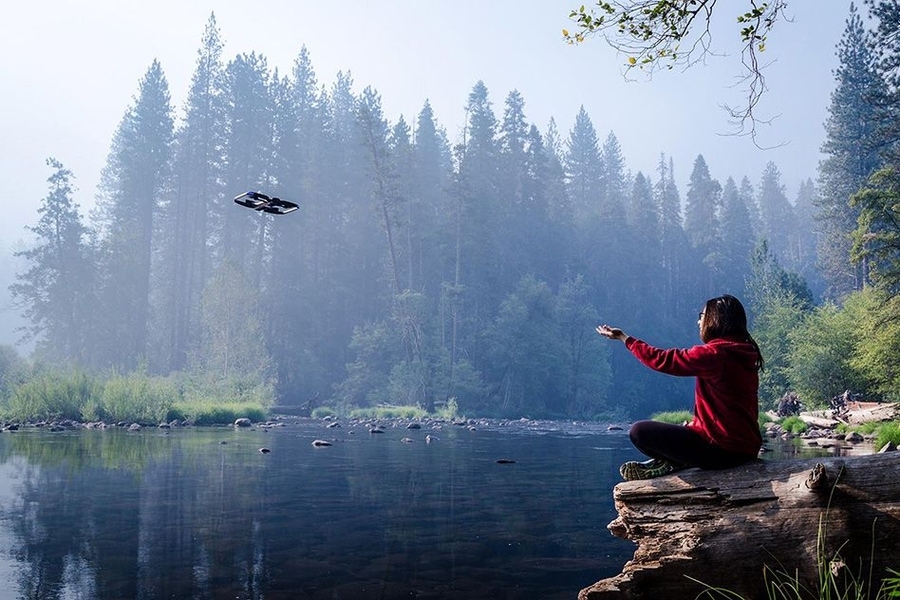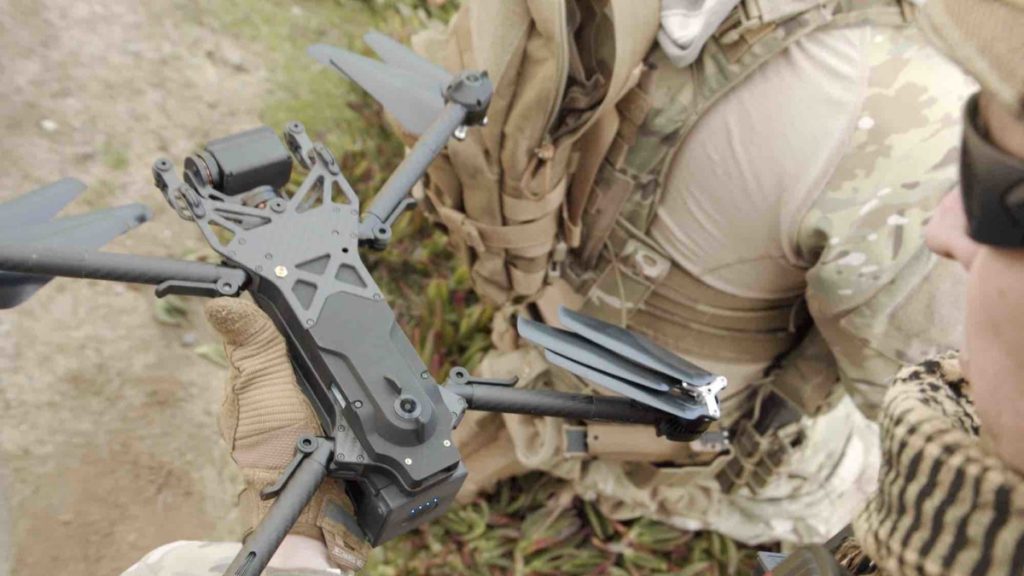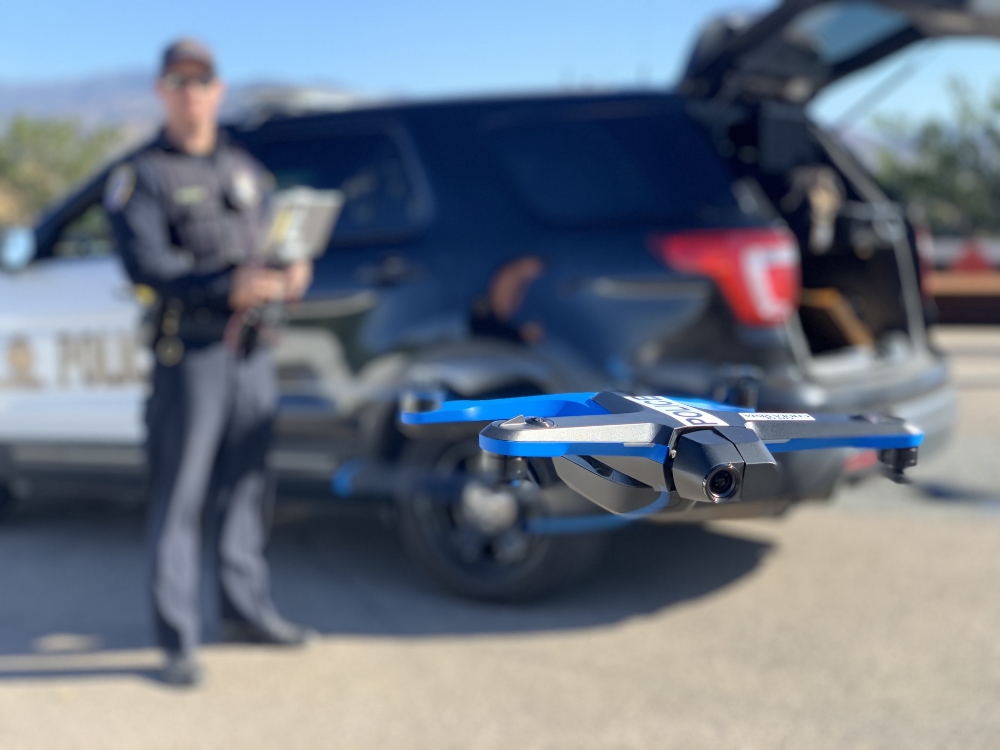A Drone Industry Unicorn—Skydio Valued at $1 Billion Following $170 Million Series D Fundraising Round
BY Zacc Dukowitz
4 March 2021Remember when Skydio just made neat selfie drones?

Photo credit: Skydio
Well, those days are long gone. In a drone industry first, the autonomous drone startup was just valued at $1 billion dollars after raising $170 million in a Series D.
This is an important milestone for us as a company, but also for the U.S. drone industry. Together with our customers, we’re proving that a U.S. company can lead the way in this industry through AI and autonomy.
– Adam Bry, CEO and Co-founder of Skydio
In Silicon Valley parlance, a startup valued at $1 billion or more is called a unicorn.
So Skydio is now, by definition, a unicorn.
Skydio’s Autonomous Technology—From Follow Me Shots to Commercial Applications
Looking back over the last several years, Skydio’s rise to prominence in the commercial drone market wasn’t something you might have expected.
The company first made a splash in 2018 with a video showcasing a drone that autonomously followed a parkour athlete as she ran through the woods performing stunts.
That video put Skydio on the map as a selfie drone that could fly itself.
But the autonomous technology behind it had big implications for commercial use cases, and the Skydio team has had its sights set on those scenarios from its inception.
We first started learning about Skydio’s extensive presence in commercial applications when we wrote about the American Security Drone Act (ASDA) last year.
At the time, we were curious to learn more about American drone companies and what the landscape might look like if a ban was put in place on Chinese drones for U.S. government use.
As we conducted research and interviews, Skydio’s name kept coming up as one of the most important domestic drone companies on the rise for commercial applications.
That was last May, just 10 months ago.
Two months after we wrote that piece the company skyrocketed onto the U.S. commercial drone scene, first with the release of its X2 drones series for commercial applications and then with a series of high-profile wins.
Here’s an overview of the milestones Skydio hit since then:
- July 2020—Skydio launches its X2 drone series for commercial applications.
- August 2020—Skydio X2 selected as one of the five Blue UAS providers approved by the Pentagon for U.S. government use.
- September 2020—Skydio announces a multi-million dollar partnership with EagleView for autonomous residential roof inspections.
- October 2020—North Carolina DOT gets a statewide BVLOS waiver to use Skydio X2 drones for bridge inspections.
- February 2020—Skydio X2D selected for the U.S. Army’s Short Range Reconnaissance Program.
Helped by Tensions with China
Of all the U.S. drone companies that have tried to leverage U.S. mistrust of Chinese drone technology to gain more market share, Skydio may have been the most successful.
Over the last several years, there has been a simmering suspicion in the U.S. of DJI drones and Chinese drone components in general.
This mistrust hit the mainstream when the U.S. Army banned DJI drones in 2017.
And it gained even more traction in 2020, with the U.S. Department of Commerce placing DJI on its Entity List and the president issuing an 11th hour executive order banning Chinese drones from use at the government level.
[See a timeline of DJI spying concerns in our article on the DJI ban debate.]
As all of these actions were taken against DJI and other Chinese drone companies, Skydio was well-positioned to gain traction for its autonomous drone technology in the U.S.


Photo credit: Skydio
With the combination of its elite Blue UAS status, its relationship with the Army, and its high visibility in the media, Skydio may in some ways have become the de facto trusted provider of drone solutions for government needs.
And for many in government, going with a trusted provider is incredibly important—if you know a company is trusted, that one factor may sway you to use its technology over any other competitor.
What Skydio Plans to Do with the Money It Just Raised
The $170 million Series D almost doubles the amount of money Skydio has raised, bringing the total to $350 million.
Skydio hasn’t shared specific plans for the new funds, saying only that the money will be used to “further accelerate product development and global sales expansion to support the rapidly growing demand for its autonomous drone solutions.”


Photo credit: Skydio
When we first heard about how the Skydio X2 was being used in public safety applications, it was presented as one of many drones you might want in your fleet.
As it was explained to us last year by Fritz Reber, Skydio’s Head of Public Safety Integration, the X2 could quickly provide visual awareness in an ongoing situation, such as a fleeing suspect or missing person. But another drone like the Matrice 300 might be more useful for drawn out situations, like surveilling an embedded suspect or monitoring a structure fire.
And yet, as Skydio’s prominence has grown over the last year, the company seems to have gotten away from the idea that its technology is only useful for specific scenarios—in some instances, it seems like Skydio is actually positioning the X2 as a go-to solution for almost any commercial drone need.
As Skydio adoption grows over the next years, it will be interesting to see its X2 drones used at a greater scale, and how industries actually incorporate them into their workflows.
Will the X2 be the only drone we need for most commercial work? Or will we still see the need for a variety of drone technologies, each made for a specific type of commercial scenario?


